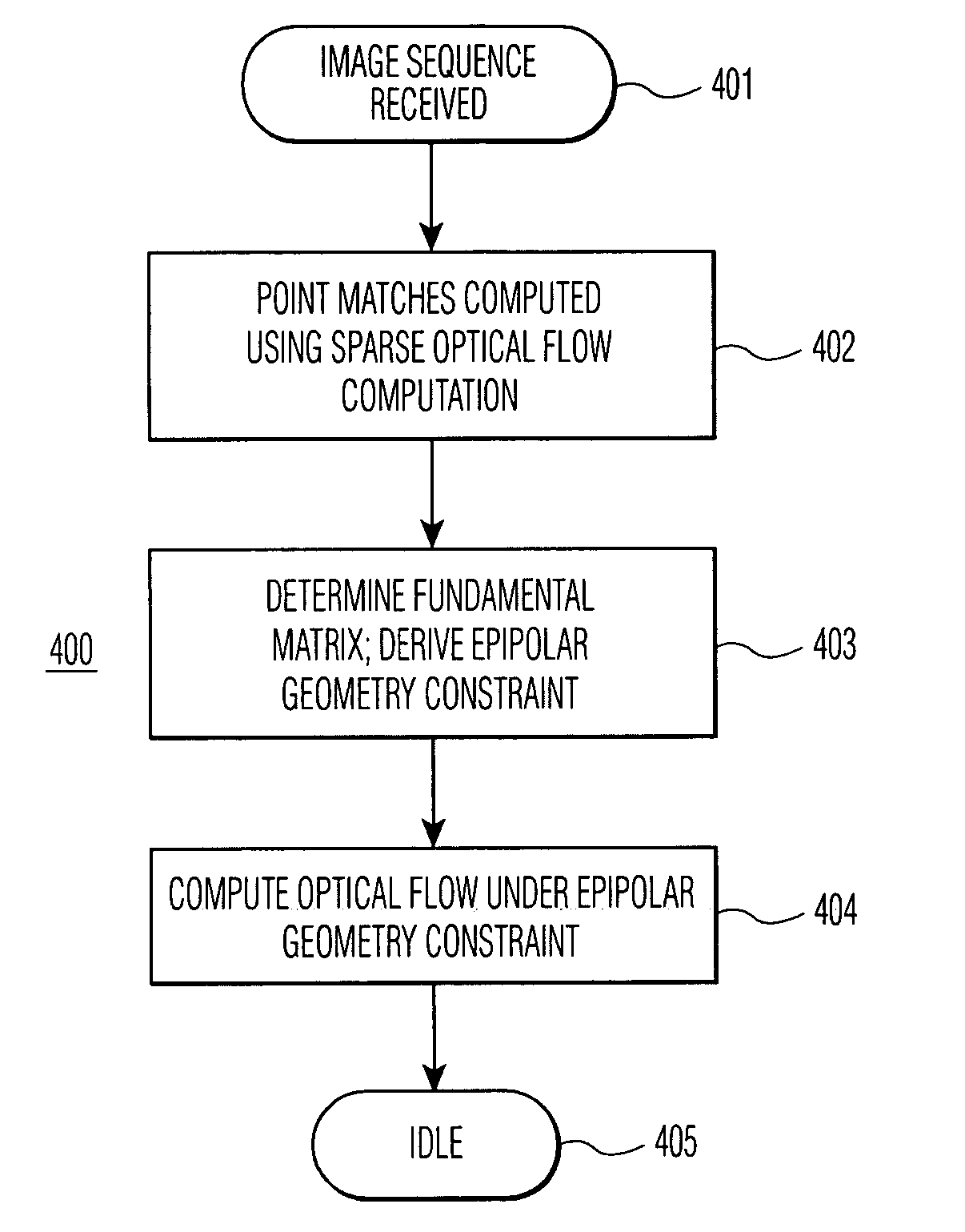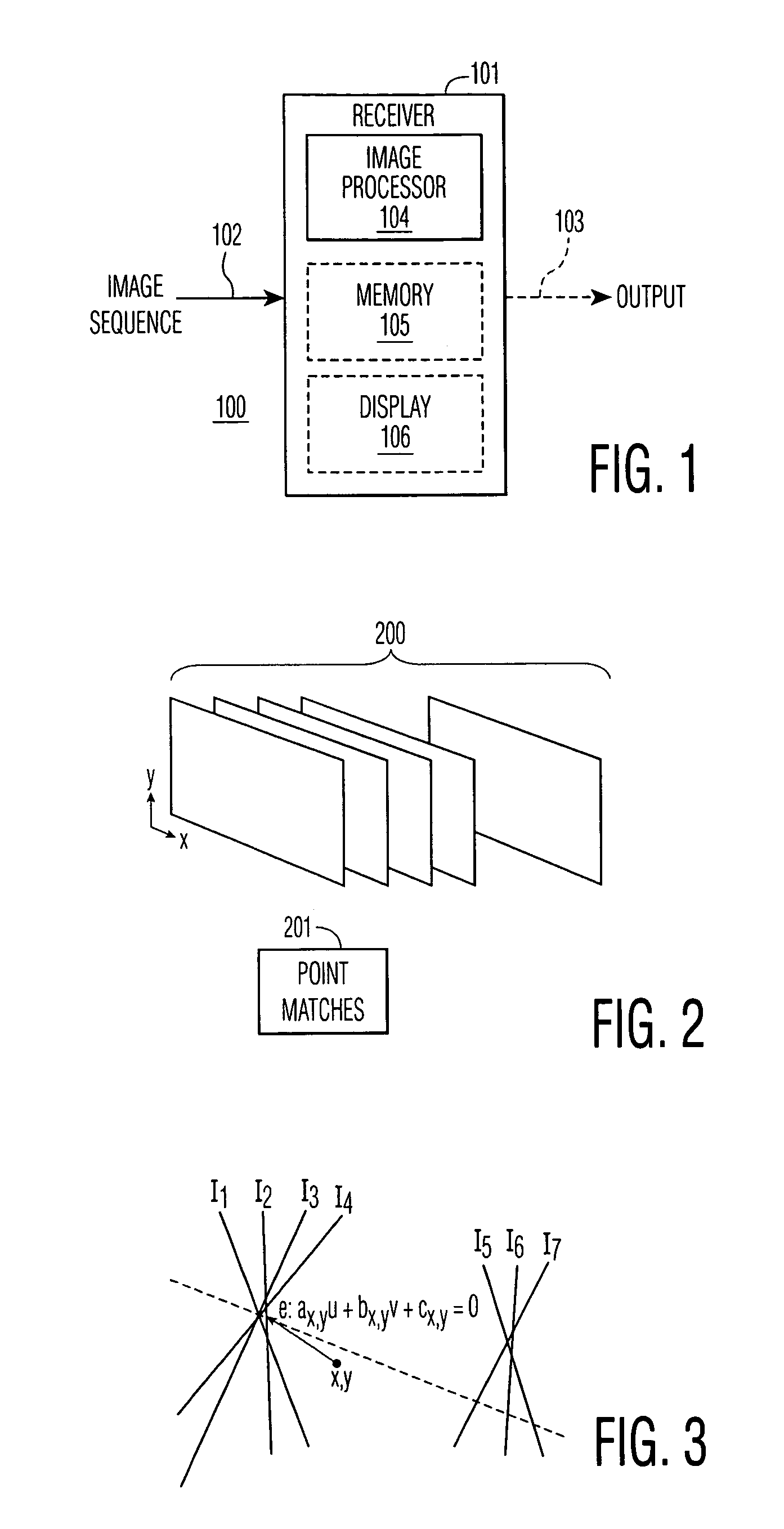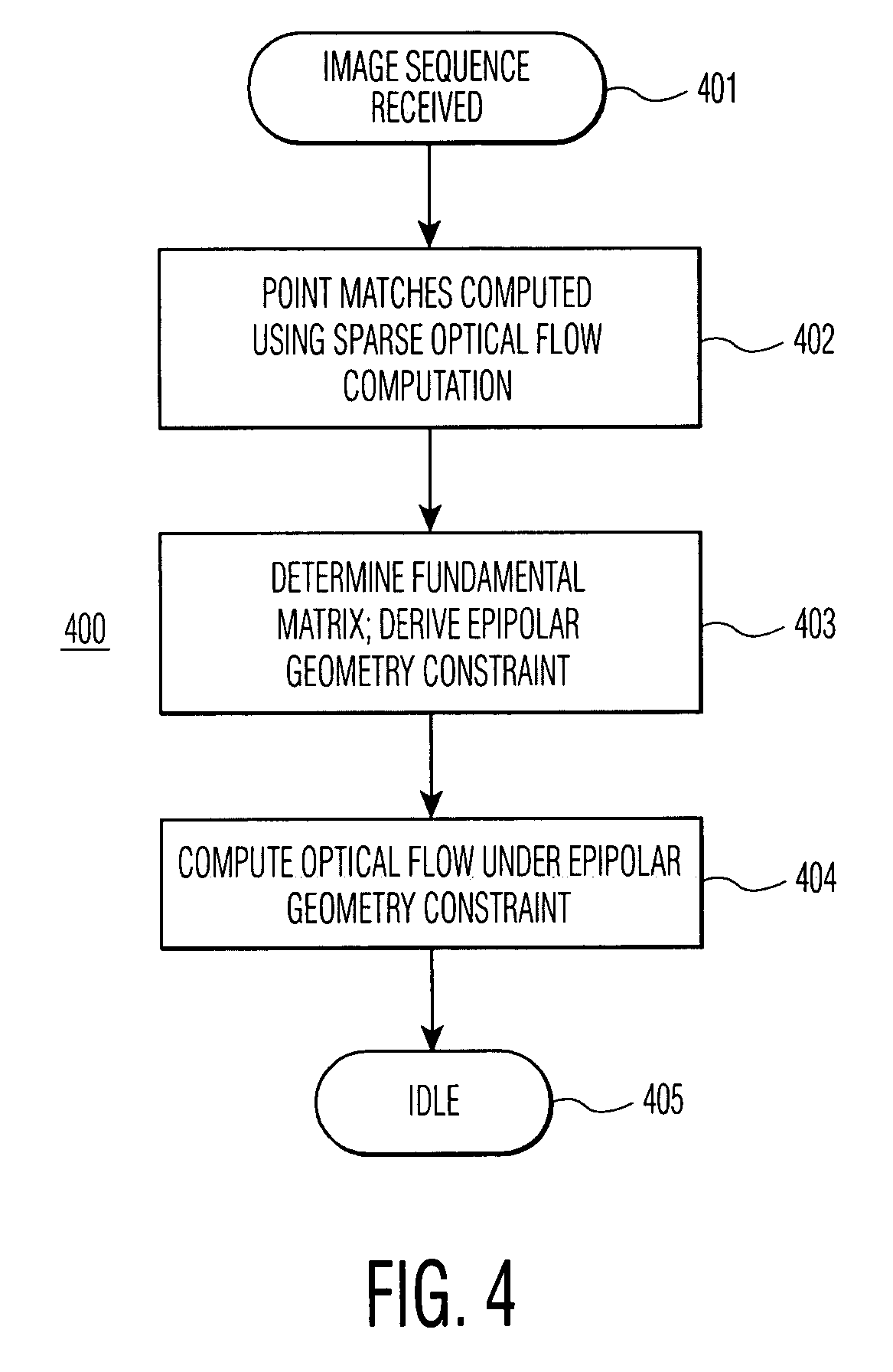Method for computing optical flow under the epipolar constraint
a computing method and optical flow technology, applied in the field of computing optical flow, can solve the problems of high computational cost, inability to determine image velocity or be sensitive to noise, and special problems in the presence of strong noise and/or multiple motions in the vicinity, so as to improve the accuracy and performance of computing optical flow
- Summary
- Abstract
- Description
- Claims
- Application Information
AI Technical Summary
Benefits of technology
Problems solved by technology
Method used
Image
Examples
Embodiment Construction
[0018]FIGS. 1 through 4, discussed below, and the various embodiments used to describe the principles of the present invention in this patent document are by way of illustration only and should not be construed in any way to limit the scope of the invention. Those skilled in the art will understand that the principles of the present invention may be implemented in any suitably arranged device.
[0019]FIG. 1 depicts a block diagram of a video system employing a method of computing optical flow under an epipolar geometry constraint according to one embodiment of the present invention. Video system 100 includes a video receiver, which may be a computer or other data processing system; a satellite, terrestrial or cable broadcast television receiver; a set top box; or a video game unit. Video receiver 101 has an input 103 for receiving a sequence of images and an optional output 104 for transmitting processed image data to, for example, a display or recording device.
[0020]Video receiver 10...
PUM
 Login to View More
Login to View More Abstract
Description
Claims
Application Information
 Login to View More
Login to View More - R&D
- Intellectual Property
- Life Sciences
- Materials
- Tech Scout
- Unparalleled Data Quality
- Higher Quality Content
- 60% Fewer Hallucinations
Browse by: Latest US Patents, China's latest patents, Technical Efficacy Thesaurus, Application Domain, Technology Topic, Popular Technical Reports.
© 2025 PatSnap. All rights reserved.Legal|Privacy policy|Modern Slavery Act Transparency Statement|Sitemap|About US| Contact US: help@patsnap.com



